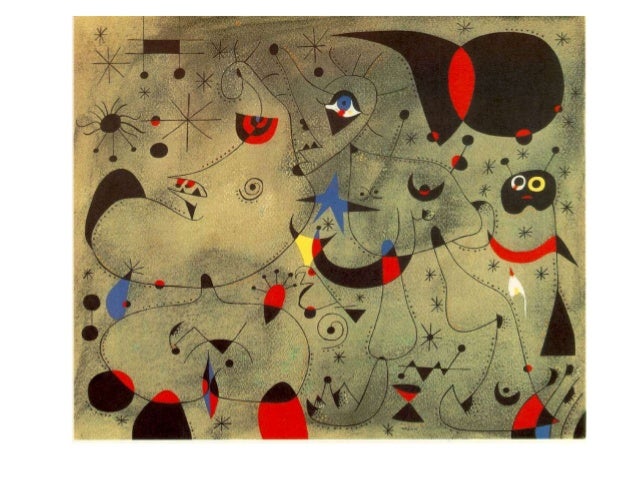

Allowing the marks he made to dictate both the formation of an image and the direction for the next work, this process was effectively his own kind of automatism, feeding off everything and anything in his surrounding environment. These sketches, cut-out images and bits of text would be used to establish a composition, which he would keep by him while painting, or making a print, in order not to lose contact with the original inspiration. He always carried a small spiral-bound notebook with him in which he would fix any form that came to mind. He did contribute to the development of Surrealist 'automatism' (writing, drawing and painting directly from the unconscious), making extensive use of found images, fragments of words or earlier sketches as the starting point for a work. While he was at one point described by the leader of the group, the writer Andre Breton, as 'the most Surrealist of us all', Miró also disagreed in many ways with Breton's political ideas and what he expected of painting.

The impact of that movement's ideas about the importance of dream images and the 'disinterested play of thought' remained with him throughout his life. It is significant that the titles of his works were often arrived at simply by what the final image suggested to him after he had worked on it and are often quite poetic in themselves.Īlong with Max Ernst and Andre Masson, Miró had been one of the first artists to join the Surrealist group in Paris in the 1920s. Miró often collaborated with poets and always hoped that his work would be 'like a poem set to music by a painter'. The first prints which Miró made were created to accompany the work of the poet, Tristan Tzara, in his book L'arbre des voyageurs (The Travellers' Tree). The prints in this exhibition illustrate both his growing confidence as a printmaker and the development which took place in his work as a whole, from the finely drawn, strange figures to the gestural, simplified forms of the later works. He produced an enormous amount of work in a range of different media, including ceramics and tapestry. Throughout his long career – Miró continued to make work right up until his death in 1983 – he was constantly looking for new ways of working. It became a vital part of his art and he experimented endlessly with a broad variety of techniques, from the soft lines of the drypoint Daphnis & Chloe 1933 to the explosive boldness of Barbaric Dance 1963.

Miró was already 36 years old and well known as a painter when he started making prints.


 0 kommentar(er)
0 kommentar(er)
